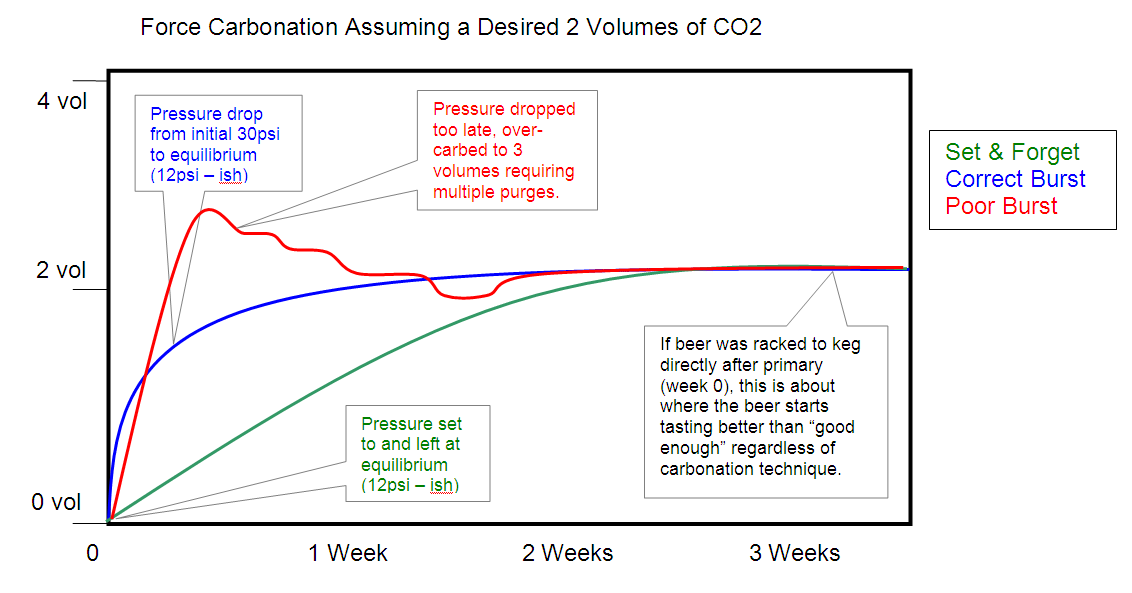jack13
Well-Known Member
iirc someone actually took on the attempt to quantify "time" in a carbonation calculator and posted something about it on HBT within the last couple of years. I'd have to try digging for it.
But, in my experience, 5 gallons of under say ~1.015 FG in a corny keg held at 36°F and 12 psi straight CO2 takes a bit over 2 weeks to reach equilibrium. That corresponds to the green line in this chart that @Bobby_M posted in this thread (which might be worth reviewing)...

I mention final gravity because when I used to fully carbonate my 11% imperial stout that finishes somewhere around 1.024-028 it took nearly twice as long just to get to 2.0 volumes. But I switched to beer gas a few years ago so now I only carb it 1.2 volumes...
Cheers!
Cool. I usually do somewhere between the green and blue line: Start with a couple days at 20-25, then drop to serving pressure. (Keezer temp about 45F).


